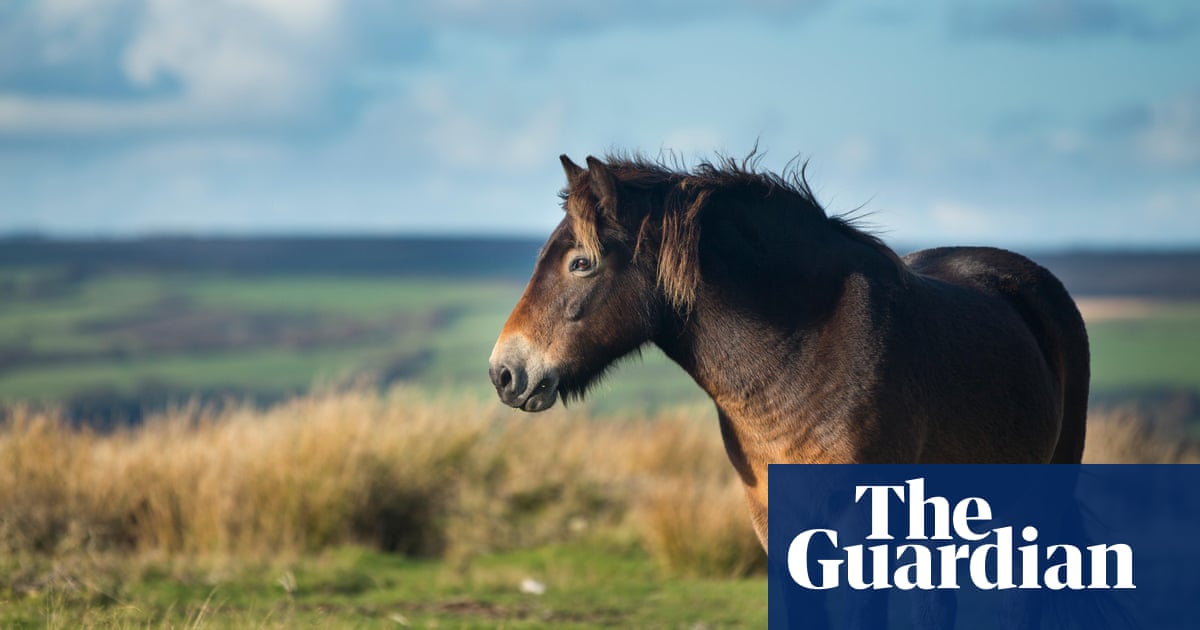Regarding George Monbiot’s article (There’s an invader turning huge swathes of Britain into deserts – and these dead zones are spreading, 9 June), yes, molinia (purple moor-grass) is a serious scourge of many of the UK’s acidic upland landscapes. In 1999, while still residing in my home county of East Sussex, I began a conservation grazing initiative using Exmoor ponies to combat the growing threat to the South Downs’ chalk grasslands from a very similar grass,Brachypodium(tor grass), which back then I estimated was affecting well in excess of 200 hectares. This grass is of little use to farmers and also seriously depletes biodiversity.
In 2004, we began to get increasingly involved with the extensive acid grasslands in the high, acid heath and grasslands of the Ashdown Forest area, involving four different landowners – SussexWildlifeTrust, Sussex Police Authority, the Ministry of Defence and the Conservators of Ashdown. Here, pony grazing was mainly to combat the rampant spread of molinia. The most spectacular result was on the MoD’s 200-hectare training area, which had not been grazed within living memory. This was transformed from mainly thick molinia to open swards within several years of grazing 32 Exmoors year-round. It also minimised the previous extensive fires caused by army pyrotechnics.
I too consider the rampant spread of these two grass species as being due to nitrogen pollution, aided to a lesser extent by less grazing. I retired in 2017, then running 85 ponies. Today in East Sussex, there are in the region of 150 Exmoors carrying on what I initiated a quarter of a century ago.Monty LarkinSt Dogmaels, Pembrokeshire
Having been an upland farmer for half a century, I share George Monbiot’s concerns about the growing domination of moliniain some regions. However, a century ago,Robert Wallace, professor of agriculture and rural economy at Edinburgh University, explained in his book, Heather and Moor Burning for Grouse and Sheep,that control of this plant can be ensured through the time-honoured combination of rotational winter-burning and active shepherding.
These ancient skills ensured that the growth of moliniawas checked by managing the flock to graze off its early-spring shoots.After the animals had been moved to their in-bye lambing fields, the moor’s later-emerging, more fragile plants were able to thrive. To prevent neglected moors from turning into lifeless deserts of overgrown molinia and tick-infested bracken, perhaps we should be paying more attention to the wisdom of our forebears.Aidan HarrisonSnitter, Northumberland
Far from crowding out other plants and wildlife, purple moor-grass is in fact a key indicator of an increasingly rare habitat – known in Devon as culm grassland and in Wales as rhôs pasture – that is home to rare plants like devil’s-bit scabious and butterflies such as the marsh fritillary, which depends on it for food and reproduction. On our former farm in north-west Devon, we now manage the land precisely to protect this highly threatened ecosystem.
George Monbiot is right to point out that walking over such land is far from easy, owing to the plant’s tussocky nature, but I suggest he takes a leaf out of Devon Wildlife Trust’s excellent short film about the culm,Never Mind the Tussocks (Here’s the Wildlife). He might learn something useful.Adam NeweyPancrasweek, Devon
Re molinia grass sucking the life out of biodiversity, the solution is hiding in plain sight: England’s last semi-wild pony population – the iconic Dartmoor hill ponies.Studies, tests and surveys published in prestigious scientific journalsconfirmthat Dartmoor semi-wild ponies not only eat molinia, but are also perfectly adapted over millennia of roaming Dartmoor to thrive in the highest and harshest parts where that job is needed most.
George Monbiot and the campaigner Tony Whitehead should not despair for Dartmoor biodiversity. Instead, they should focus their efforts on asking Defra to ensure its policies nurture and sustain the number of Dartmoor hill ponies, and biodiversity will be burgeoning here once more.Charlotte FaulknerDartmoor Hill Pony Association
